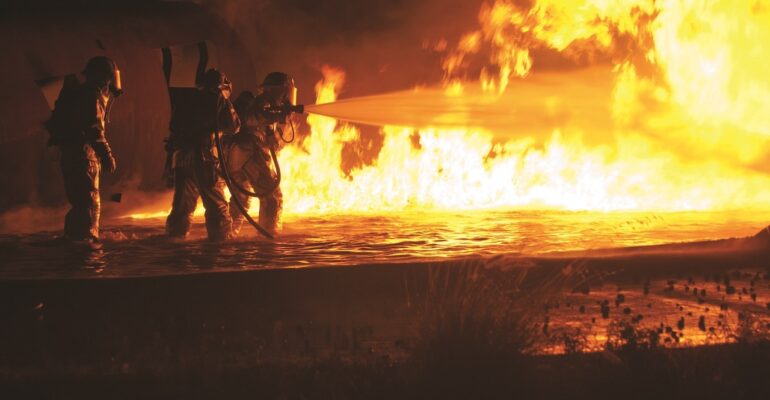Fire safety: How can FMs Deliver the Most Robust Fire Safety Action Plans?
Fire safety: How can FMs Deliver the Most Robust Fire Safety Action Plans?
By law, businesses with five or more employees must have fire safety action plans in place. Equally, if you’re a business which operates under a licence to your premises (for example, a pub with an alcohol licence), you’ll need a fire safety action plan, regardless of the number of employees you have.
While it can feel like an administrative task, it’s much more than just a tick in the box. Putting effective measures in place can save lives if the worst happens and your premises falls victim to a fire.
So how do you go about delivering the most robust fire safety plan possible?
Step 1: Appoint a Responsible Person
Under the Regulatory Reform (Fire Safety) Order 2005, the Responsible Person is anyone who has control, or a certain degree of control over certain areas within the premises. It could be the owner, employer or occupier. In practice, it’s often the health and safety advisor for the business.
The Responsible Person must make sure that the work premises are as safe as possible from the risk of fire.
Step 2: Carry out a risk assessment
To do that, the Responsible Person carries out a fire risk assessment. The purpose of this exercise is to identify potential sources of fire and any points at which a fire may escalate or spread rapidly. The risk assessment also highlights and people who may be particularly at risk, such as anyone people with reduced mobility, or sight impairments.
Step 3: Mitigate against identified risks
Then you need to put in place suitable mitigation measures that address the risks identified.
For example, you need to make sure that escape routes are available. Any emergency exit doors must be unlocked and able to be opened quickly, without a key.
Where a door is shut for security purposes (such as in the stockroom of a shop), make sure it can be easily opened from the inside. A good way to do that is to install push bar devices on these doors.
Protect your means of escape. That means that you keep escape routes free of obstructions at a very minimum. But you also might install fire doors, sprinklers, and fire extinguishers. These measures will also stop the spread of fire through the building.
Finally, make sure there is a way to detect fires. That’s usually in the form of a fire alarm, which alerts everyone to evacuate. In larger premises, where fires can start undetected by a person, this should be an automatic detection and warning system.
Step 4: Prepare your Fire Safety Action Plan
Your risk assessment will form part of your fire safety action plan. Each fire safety plan will vary depending on the characteristics of the building, and the occupants. But as a guide, it should include:
- Clearly marked escape routes
- Enough exits and escape routes to evacuate all occupants of the building, including visitors. They must be adequate in size, number, location, well lit, unobstructed, and safe to use.
- Emergency doors that open easily
- Emergency lighting where needed
- A safe meeting point for staff
- Sufficient firefighting equipment that is wall-mounted by exits
- An effective detection and warning system. Can it be heard by all occupants?
- Any special requirements for people with mobility needs
You should review your risk assessments and escape plans frequently to make sure they are always up-to-date, relevant and providing the best protection to the users of the building.
Step 5: Train your staff
Training your staff is an imperative step to enforcing fire safety in your business, and one which many businesses overlook. But if your staff are trained, they can help to keep the building safe, and keep you compliant with your duties. For example, a trained employee who spots something dangerous will let their employer know.
But training is also important for ongoing co-operation. Employees need to know that they must not interfere with any measures that have been put in place. They can’t remove fire extinguishers from their brackets or prop open fire doors.
To keep all your employees safe, make sure that they are trained in using fire extinguishers, and they know their evacuation routes with regular drills. This ensures that in the event of an alarm, all employees are aware of how they should act and are aware of the routes and means of escape.
Round-up
Almost one in five businesses suffer disruption every year, and of those 80% will close within 18 months of their major incident if they don’t have a business continuity plan in place. Don’t be one of them. Get a robust fire action plan in place to protect your people, and your business.
Fire Safety Action Plans
Businesses are legally required to comply with fire safety legislation, but there’s also lots that can be done beyond that to keep people and property safe.
You should not overlook the fact that 80% of organisations without a business continuity plan either never re-open or close within 18 months following a major incident, according to the Tyne & Wear Fire and Rescue service. It should not be forgotten that almost 1 in 5 businesses suffer disruption every year.
The Regulatory Reform (Fire Safety) Order 2005, places a duty on the Responsible Person to establish appropriate procedures to be followed in the event of serious and imminent danger (fire) to relevant persons. The Responsible Person must comply with Articles 8 to 22 and 38 of the Fire Safety Order and any regulations made under article 24 which are relevant. This includes ensuring fire safety throughout the work premises, which includes a requirement to complete a fire risk assessment.
The significant findings of this risk assessment including measures that have been or will be taken and any groups of persons identified by the assessment as being especially at risk, must be recorded:
- If you have 5 or more employees,
- There is a licence under an enactment in relation to the premises (for example, an alcohol licence),
- There is an alterations notice in place, in relation to the premises requiring this.
Fire safety Action Plans should be drawn up on a risk basis and to ensure these are carried out methodically, both risk assessments and escape plans should be reviewed.
This will assist in Identifying potential sources of fire, escalation potential (rapid fire growth), persons at risk, and suitable mitigation measures.
It should not be forgotten that each Fire safety plan is building and occupant dependant, and should include:
- Clear escape routes,
- Clearly marked escape routes that are as short and direct as possible,
- Enough exits and routes for all occupants of the building, including visitors, to escape,
- Emergency doors that open easily,
- Emergency lighting where needed,
- Training for all employees to know and use the escape routes,
- A safe meeting point for staff
Under the Fire Safety Order the following actions are examples of what you should take, but are not limited to:
- Minimise the risk of a fire occurring and take steps to make sure that if a fire starts, it can’t spread through the building,
- Make sure escape routes are available and that any emergency exit doors are not locked and can be quickly and easily opened without the need of a key,
- Where a door is shut for security purposes (such as in the stockroom of a shop), make sure this can be easily opened from the inside by installing push bar devices – these should not be blocked or obstructed,
- Means of protecting the means of escape, (fire doors, sprinklers, extinguishers, building construction).
- Make sure there is a way to detect fires and that this raises an alarm to alert everyone to evacuate. In larger premises, where fires can start undetected by a person, this should be an automatic detection and warning system.
To ensure you have a robust Fire Safety Action Plan the following points should be covered:
- Fire risks in the building
- Means of escape & emergency lighting. Are they adequate in size, number, location, well lit, unobstructed, safe to use, etc.
- Firefighting equipment – Wall mounted by exits, suitable for the types of hazards present and sufficient in number, should conform to BS EN 3.
- Means for detecting & giving warning in case of fire – Can they be heard by all occupants?
- Are fire evacuation signs and fire plans satisfactory?
- Fire Procedure and Training of employees – What to do in the event of a fire.
- Measures to mitigate the effects of a fire, compartmentation, fire doors etc
- Any special requirements for people with mobility needs
Employees should follow fire safety measures that have been put in place for their safety and cooperate with their employer to ensure they can comply with their duties. If an employee identifies something dangerous, they should let their employer know.
Employees must not interfere with any measures that have been put in place, for example, removing fire extinguishers from their brackets or propping open fire doors.
Above all, businesses should not overlook the need of training their employees. This training should not only cover fire safety and the use of fire extinguishers, but also regular fire drills. This will ensure that in the event of an alarm, all employees are aware of how they should act and are aware of the routes and means of escape.
As well as commercial organisations offering training your local Fire and Rescue service can offer advice and assistance with establishing a robust Fire Safety Action Plan. The home office website is also a good source of information for businesses.




